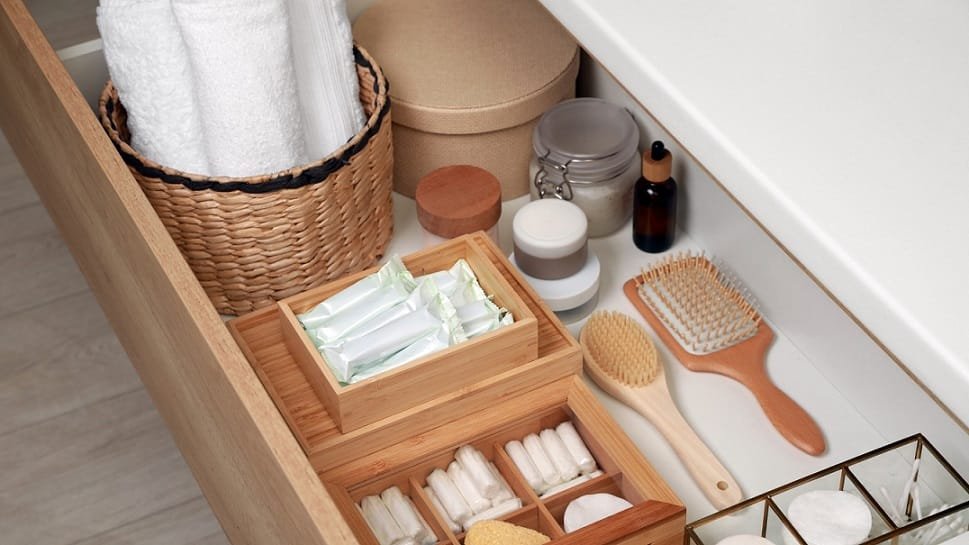How to Prevent Leaks on your Periods
Preventing leaks during period is essential for ensuring peace of mind and physical comfort – as well as good hygiene. Leaks can be expected during the days when the period flow is heavier. The chance of a leak is greater during those 2-4 days and depends mainly on the duration for which the period product (e.g. pads, tampon, menstrual cup) has been in use, the product itself, its placement, and sometimes the person’s activity. Some tips below can help you prevent leaks while you are on your period and going through the heavier flow days.
Learn how to prevent leaks on your periods with tips on choosing the right products, proper placement, regular changes, and extra reinforcements for comfort and hygiene.
Choose the correct type of product
To begin with, choose the right type of period product for yourself. Depending on whether you get heavy, normal or light period, selecting the right type of period product is important. Pads and tampons come with varying absorbencies, while menstrual cups come in different sizes. So personal preferences for any of these period products influence your choice to buy that particular type of product. For a heavy period if you believe a tampon or cup would be safer, you may use that. Or if you think pad is comfortable and leaks can be avoided, you may go with that personal choice. A tampon or cup may be considered more practical as they are safe if positioned properly as long as they are changed frequently. Some may believe that pads can leak on the sides quicker even if it has wings. So again, choose according to your preference, need and practicality.
Be careful about the absorbency
Secondly, choose the period product according to your flow. Pads and tampons come in different absorbencies. There are pads for night time use, for heavy, normal and light flow and longer, shorter and medium sizes. Similarly tampons are different for heavy, normal and light flow, depending on how much fluid they absorb. Choosing the appropriate one will ensure your need is met and there are no leaks. If one absorbency or size troubles you, switch to a different size or absorbency. For tampons, if there is a leak within six hours, you should use a higher absorbency meaning the next size. If however, after six hours, there is a lot of white area left on the tampon you should size down as it means the flow is not heavy enough for this size. Needlessly using a higher size of tampon can carry the risk of Toxic Shock Syndrome due to bacterial infection.
Menstrual cups usually come in small, medium and large sizes. If you are under 18 or never married, you should use the small size, if you are above 18 but have never given birth vaginally, only through C-section, then the medium size is suitable, and if you have given birth vaginally then you should use the large sized cup. Cups leaks for various reasons including improper insertion, or if the cup did not open properly and attach to the vaginal walls, or the holes at the rim were clogged, or if they fill up too much.
Make sure you have your period product adjusted properly
Thirdly, it is important to ensure that the pad, tampon or menstrual cup is inserted or placed properly and securely. This will help avoid leaks. If a menstrual cup is placed at an angle or is tilted there is a chance it would leak, or if it doesn’t open properly inside the vagina even then it can leak. Likewise if a pad is placed slightly towards one side or moves to a side after being placed, there is a chance of leakage. Therefore spend a minute and make sure your period product is adjusted properly to avoid inconvenience or embarrassment. Meanwhile a tampon would only leak if left in for too long or is not the right absorbency for your flow.
Change regularly
The most important defense against a leak is a frequent change of your period product no matter which type you are using. They all have a specific capacity. It is important to go by that and change regularly. A sanitary pad need to be changed every four to five hours, a tampon needs to be changed every eight hours and a menstrual cup should be taken out, emptied, washed and then placed back every 12 hours.
Where changing keeps your hygiene level up keeping you comfortable, the biggest advantage is that you will be able to avoid leakage due to overflowing.
Extra reinforcement
While you ensure that you have the right product according to your need, you can practice extra caution by adding some extra items. To be safe and sure rather than sorry you should make sure that you wear an underwear when you are using a tampon or menstrual cup. Further, you can wear a pantiliner to ensure there is no leakage on the days the flow is heavier. For the sanitary pad users, they can double the pads, to make sure there is no leakage. They can be placed side by side so that the surface area increases, and the pads can absorb a heavier flow.
Conclusion: How to Prevent Leaks on your Periods
In conclusion, preventing leaks on your periods is essential for maintaining comfort, confidence, and hygiene. By selecting the right period products suited to your flow, ensuring proper placement, changing regularly, and using additional reinforcements when necessary, you can effectively manage your periods with ease. With these practical tips, you can navigate your heavier flow days worry-free and focus on your daily activities without disruption.
Written By: Amna Saadat Ali




